
From FastCOdesign: Diébédo Francis Kéré Imbues Mud With Poetry, And Gives Africans A Future

Architecture, Art, Design, and Culture using of mud, clay, soil, dirt & dust.

From FastCOdesign: Diébédo Francis Kéré Imbues Mud With Poetry, And Gives Africans A Future
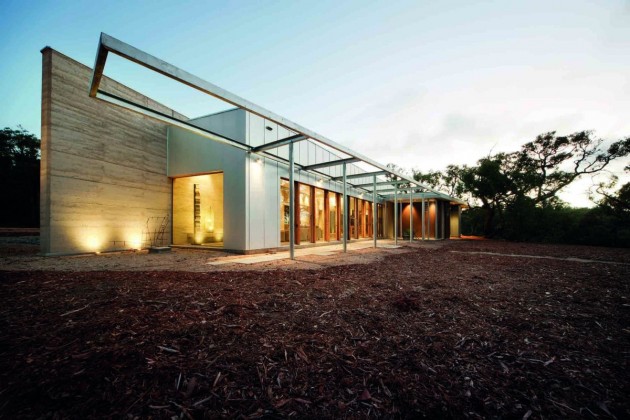
The Hinterland House by http://www.morrispartnership.com.au/ is a rammed earth house designed to be in harmony with the Australian bush. No fences, screens or garden areas were incorporated to insure as little disturbance as possible to surrounding inhabitants. The local animal and plant life can continue to roam as freely as before the structure was built.
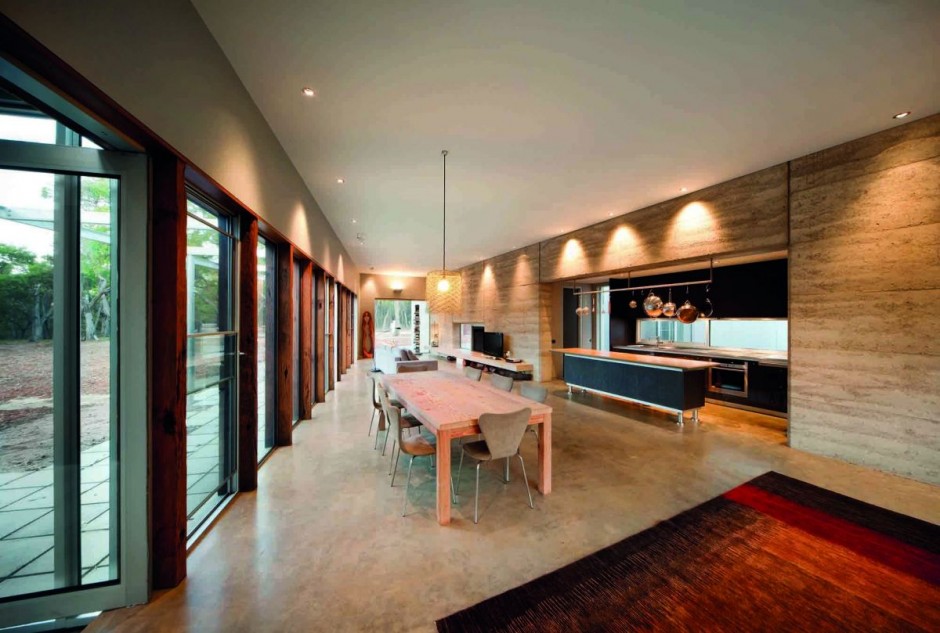
Along with rammed earth, the material palette includes spotted gum, rough recycled timber, concrete floors, corten steel and zincalume. Building environmental features include the earthen thermal mass, double glazing, shading and cross ventilation that mitigates against the need for air conditioning. Sustainability solutions include the use of worm farm waste treatment, solar heating and hot water, and the cellar pantry drawing cooled air through an underground chamber.
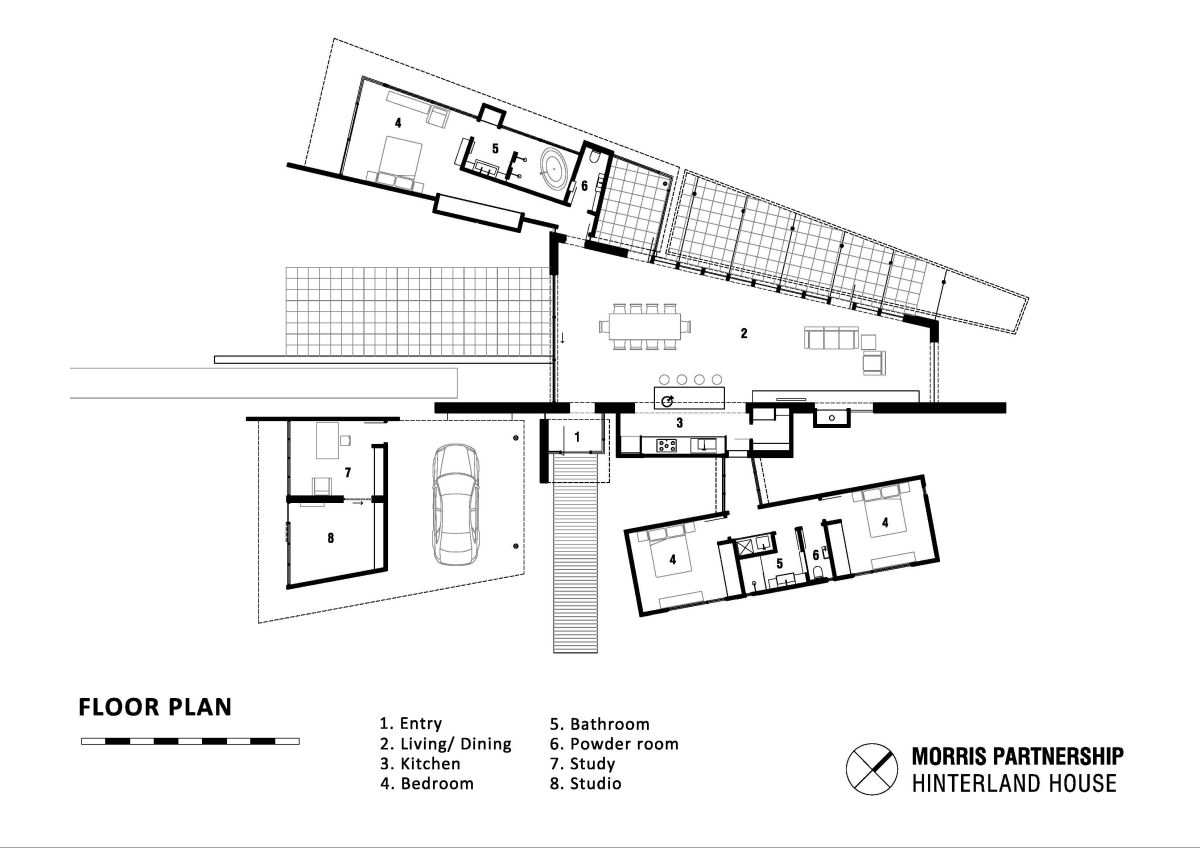
The Hinterland House program includes:
· Living/dining/kitchen core
· Clients’ separate bedroom suite
· Separate studio & study
· Separate guest accommodation
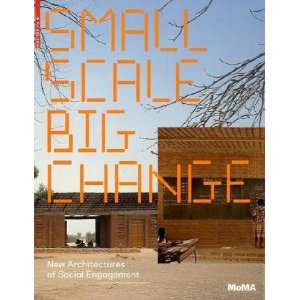
The role of the global architect in society is changing. Instead of waiting for commissions to come their way, architects are initiating and developing practical solutions in response to dramatically changing living conditions in many parts of the world today. Small Scale, Big Change
focuses on a central chapter of this shift, presenting recently built or under-construction works, many of which are constructed of earth, in underserved communities around the globe by these 11 architects and firms: Elemental (Chilean); Anna Heringer (Austrian); Diebedo Francis Kere (Burkinabe); Hashim Sarkis A.L.U.D. (Lebanese); Jorge Mario Jauregui (Brazilian); Frederic Druot, Anne Lacaton & Jean Philippe Vassal (French); Michael Maltzan Architecture (American); Noero Wolff Architects (South African); Rural Studio (American); Estudio Teddy Cruz (American, born Guatemala); and Urban Think Tank (American/Austrian/Venezuelan).
Without sacrificing concern for aesthetics, these architects have developed projects that reveal a post-utopian specificity of place; their architectural solutions emerge from close collaboration with future users and sustained research into local conditions. The projects–which include schools, parks, housing and infrastructural interventions–reveal an exciting change in the longstanding dialogue between architecture and society, as the architect’s roles, methods, approaches and responsibilities are dramatically reevaluated. They also offer an expanded definition of sustainability that moves beyond experimentation with new materials and technologies to encompass larger concepts of social and economic sustainability. Small Scale, Big Change examines the evolving standards of responsibility and participation in architecture and the ways in which architects can engage critically with larger social, economic and political issues currently facing communities around the world.
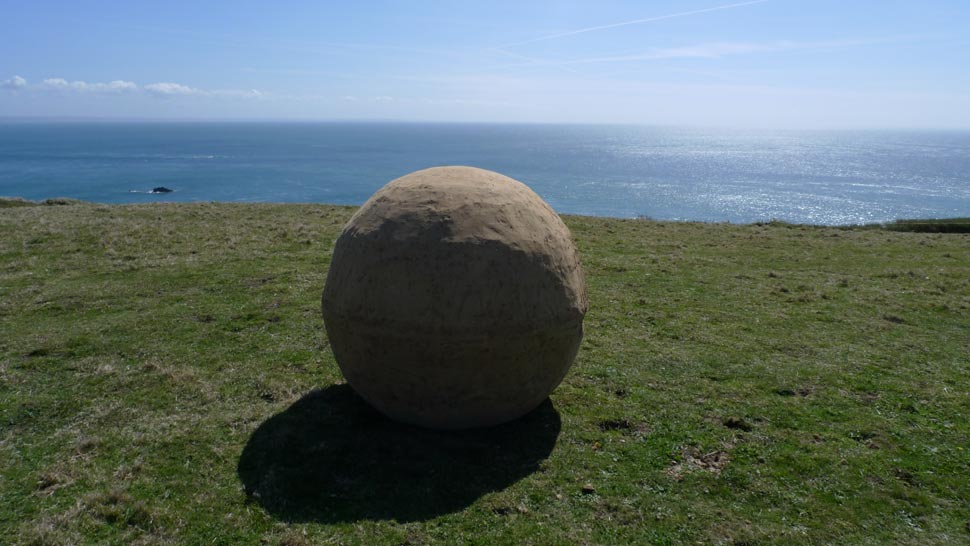
A new site-specific installation of works by Andy Goldsworthy opened on the island of Alderney, located in the Bailiwick of Guernsey in the English Channel Islands. Alderney Stones consists of an installation of 11 boulders spread across the landscape of Alderney.
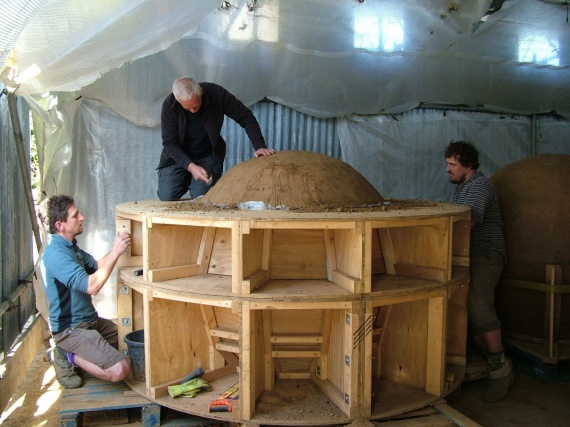
Goldsworthy formed each 3-ton boulder from a mold of rammed earth and other materials sourced from the island, such as berries, seeds, old tools and discarded gloves.
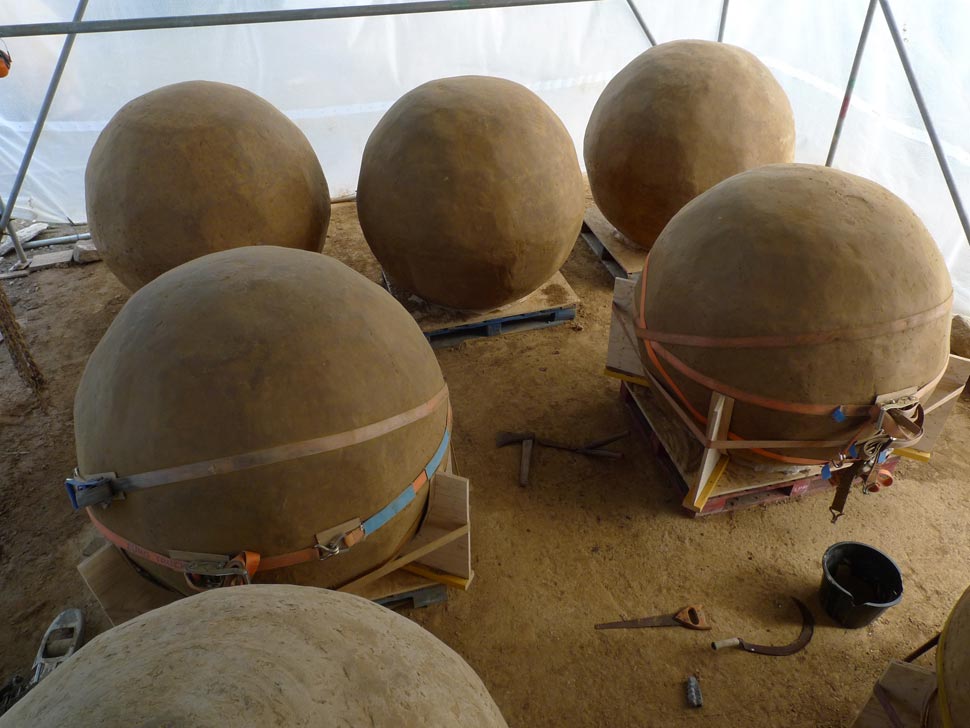
Set in varying degrees of exposure to the elements, the stones will eventually erode, revealing the elements concealed inside, and ultimately return to the land from which they came.
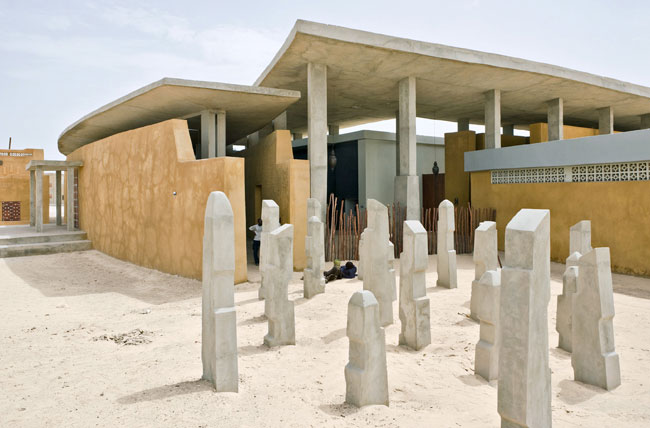
The new Ahmed Baba Institute of Higher Islamic Studies and Research, completed in 2009, introduces state-of-the-art techniques for conserving, exhibiting, and studying these famous Timbuktu manuscripts. dhk Architects of Cape Town designed phase one of the $8.36 million, 50,000-square-foot Institute, creating an archive of 20,000 manuscripts and a public library with reference materials on the culture of the region.
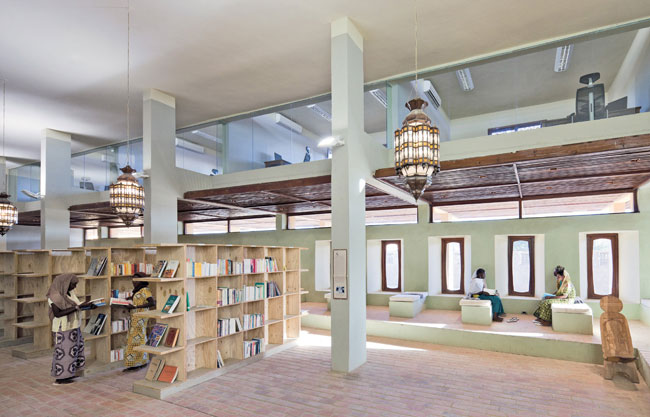
Andre Spies, the project architect for dhk, designed the institute and now heads his own practice in Cape Town called twothink architecture, which completed phase two — fitting out the interiors. To respect the vernacular architecture of the region, Spies chose to build primarily with mud, which requires maintenance after the annual rains. He found a local mason who mixed mud with concrete to make the facade rain-repellent, and he purchased mud bricks from craftsmen on the streets.
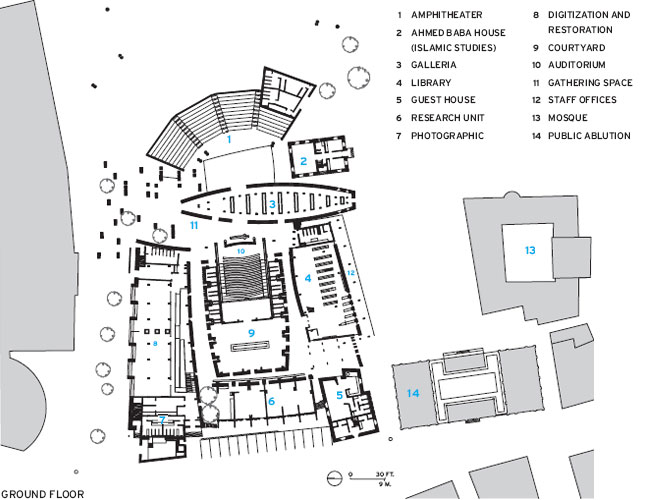
The introduction of a new building is challenging in the low-tech, mud-built setting of Timbuktu. Albakaye Ousmane Kounta, the Malian writer, poet, and storyteller, criticizes the building as “too modern.” Whereas fortresslike walls concealed the internal configuration of the former institute, the new one blurs inside and out with outdoor hallways arrayed along a “free plan.” This modern approach is uncommon in West Africa, where public and private spaces are strictly demarcated to keep out sand, roving donkeys, and itinerant people. The new design encourages access and openness, but it has drawbacks as well. In addition, some spaces — such as the auditorium — have rigid functions not easily adapted to other uses.

Founded in 1998, Kleiwerks International is a non-profit organization and a global network of innovative design specialists collaborating with communities to create ecological and social resilience.
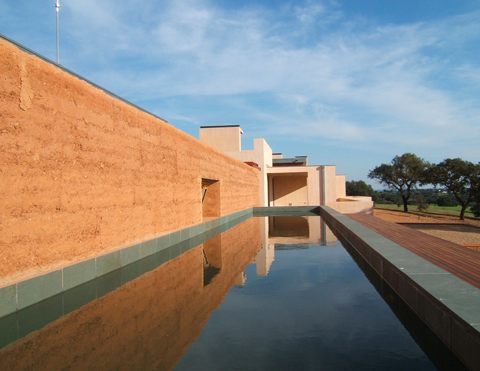
The Dwelling in Beja is a single-family dwelling built of rammed earth and a mixed structure of reinforced concrete and wood with zinc coping. Self-levelling floors of craftwork brick tiles, wood. Traditional render of aerated lime paste and whitewash with the addition of natural pigments. Betão e Taipa was responsible for the entire construction.
Building Stats
Building area 550 m2
Volume of rammed earth 260 m3
Location Beja municipality
Designed by Bartolomeu Costa Cabral, João Gomes and Mário Anselmo Crespo
Date built 2006
11vo Seminario Iberoamericano de Construcción con Tierra y el 4to Seminario Internacional de Investigación del Diseño Sustentable
21 al 24 de septiembre 2011
Organizan: por la UNIVERSIDAD AUTÓNOMA DE TAMAULIPAS • FACULTAD DE ARQUITECTURA, DISEÑO Y URBANISMO
Para mas informaciones visite: http://www.fadu.com.mx/pdf/Convocatoria_XISIACOT_IVSIIDS.pdf
Building with Earth
From Cultural Heritage to Contemporary Architecture
Professionals, Know-how and Techniques in Europe
On Wednesday, 4 and Thursday, May 5th, 2011, in Marseille (France)
Region Provence-Alpes-Côte d’Azur
Chamber of the Hotel of Region
(27, Place Jules Guesde – Marseille 2nd)
This symposium is organized by the Ecole d’Avignon and ICOMOS France, in partnership with the Escola Superior Gallaecia (PT), the Polytechnic University of Valencia (SP), the University of Florence (IT) and the Adviser in Architecture, Urban planning and Environment (CAUE) of Vaucluse (FR), in the framework of the European project Terra Incognita. Earthen architecture in Europe (Culture Programme 2007-2013). It receives the assistance of the Research Laboratory for Historical Monuments (LRMH) and the collaboration of the Confederation of artisans and small companies in the building trade (CAPEB).
We invite you to consult the programme of these days (see attached) and send your registration form before April 22, 2011, to Ms. Victoire DORISE, responsible for coordinating registration (icomos.france@wanadoo.fr or fax: +33 (0)1 47 55 19 61).
The publications which will be presented at the occasion of the symposium are available to order. You can reserve them from now on by returning us the order form attached.
For more information, we suggest visiting the web page of the symposium.
In the continuity of this event, you’re invited to participate to an important meeting dedicated to the launching of an European network for earthen architecture. This meeting is open to all individuals and institutions interested in the field and will be held on Friday, May 6th (10:00 am – 01:00 pm), at the Region Provence-Alpes-Côte d’Azur (on registration, within the limits of the available places).
Looking forward to meeting you in Marseille,
Yours faithfully,
Michel VAUZELLE, President of the Region Provence-Alpes-Côte d’Azur,
Pierre-Antoine GATIER, President of ICOMOS France,
Patrice MOROT-SIR, Directeur de l’Ecole d’Avignon,
Isabelle PALLOT-FROSSARD, Director of the Research Laboratory for Historical Monuments (LRMH).
For more information download:
EA TI COLL PROGR 2011 EN_Mise en page 1.pdf
Fiche inscription EN.doc
Kit Publications_EN.pdf
TECNOTIERRA COLOMBIA, entidad colombiana desea difundir este evento para el mes de marzo….se esta promoviendo un taller practico integral de arquitectura sostenible con tierra, el taller esta dirigido a todo tipo de publico interesado en aportar al habitar el planeta y construir su hábitat de una forma ecológica y respetuosa con la naturaleza, aminorando el gasto energético de los materiales…en esta experiencia realizaremos la transferencia tecnológica con tres sistemas constructivos. El taller se programo dos fines de semana, 6 días y 48 horas de vivencia practica.
Para mayor información pueden escribirnos y desde allí se les entregara
mayor ilustración con la preinscripción en el correo electrónico
tallerarquitecturatierra@gmail.com, esperamos nos demuestre su intéres y
les haremos llegar todo el contenido del proyecto, el cupo es limitado…
Como sabemos que cada uno de ustedes tiene su red de conocidos, que les
puede interesar el tema les pedimos el favor de colectivizar esta
información y esperamos que cada vez seamos mas profesionales, personas
interesadas y con herramientas para hacer una arquitectura mas respetuosa
con el medio ambiente…..
Atte
Comite organizador y Arq. LUCIA E. GARZON
Coordinadora
Celular 57 3102450630